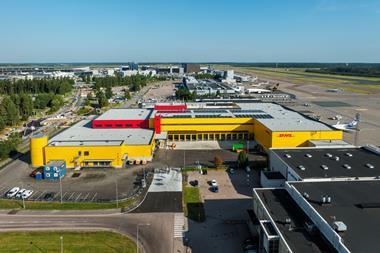Commercial property in the UK will need to be net zero by 2050, but investors need detailed data on the performance of individual assets today, write Oliver Light and David Delaney
The requirement for transparency has ramped up in the past year. Governments, investors and occupiers are asking for more data to help determine a building’s ESG performance. Crucially, this data impacts the valuations of assets, their attractiveness in the market, and their ability to access green loans.
The magnitude of real estate investors or asset managers making net-zero statements is significant, such as the Net Zero Asset Owner Alliance’s US$5.7trn (€4.77trn) commitment to transition investment portfolios to net-zero GHG emissions by 20501. The Better Building Partnership (BBP) Climate Commitment included 24 signatories, representing over £300bn (€351bn) of assets under management encompassing more than 11,000 properties2.
This commitment means that 11,000 buildings will need to measure their operational emissions “transparently and accountably”. The resulting transparency will enable real estate owners and investors to better differentiate how net zero could impact valuations in property.
IPSX, the new stock exchange for real estate, allows investors to understand the merits of a single-asset investment. IPSX is working in partnership with Carbon Intelligence to help develop clear guidelines for all admissions to the exchange on reporting and managing embodied and operational carbon emissions. IPSX provides a platform to view the credentials of a single-asset investment and will collaborate and support issuers to improve data transparency.
When investing in real estate assets, understanding the underlying quality of the building and how it runs is important. While the ESG data can be challenging to obtain, the insight provided is more granular and valuable than aggregated data at a portfolio or fund level.

Energy intensity, for example, helps us understand the technical, operational control over the building. High tenant usage or on-site data centres can lead to highly energy-intensive buildings. Energy usage data is helpful in that it can also show how much control the site staff have over the central plant and other operations. Or equally, it can provide insight into social value impact – for example, Federated Hermes worked with Hatch to understand the number of apprenticeships or social benefits generated3.
The largest asset managers are behind single-asset reporting. On behalf of BlackRock’s clients, Larry Fink, in his annual 2021 letter, asked that investors “publish the proportion of BlackRock’s assets under management that are … aligned to net zero”4.
Net zero will have a crucial effect on transition risks including policy changes, reputational impacts, market preferences, norms and technology shifts. As the UK becomes more focused on the legislated target of net zero by 2050, inaction could lead to building obsolescence. Increasing the transparency of these risks on individual assets will help investors make clearer decisions on what will maintain or increase in value through transition.
Between 70% and 80% of buildings that will be in use in 2050 have already been built today5. However, only a handful of buildings that exist are designed to address climate-change risks, and fewer still are performing in line with net zero. Therefore, almost all buildings have a high risk of obsolescence in the shift to a zero-carbon economy. We need to focus on how we can transparently report on an asset-by-asset basis, because, by 2050, all buildings will need to be net zero, and that date is only one to two refurbishment cycles away. Over the next five years, we will have a much better understanding of the quantity of future-proofed buildings or assets likely to be stranded.

These risks are also very dynamic as the UK’s legislative framework for the transition to net zero is not yet in place. As a result, the policies our buildings are working within are shifting very quickly. Continuous monitoring of environmental data to improve building performance will help us adapt to the UK government whitepaper recommendations. We also anticipate updates concerning Part L building regulations, EPCs and a new mandatory energy-rating requirement.
On 10 March 2021, the EU Sustainable Finance Disclosure Regulation (SFDR) came into force. SFDR sets out new rules across the EU that the UK government might adopt. The regulation requires real estate investors domiciled in Europe to provide greater transparency across their portfolios. Example data requirements include scope 1, 2, and 3 emissions, energy procured from renewable sources, and the energy performance certificate. Crucially, the reporting also sets out definitions, such as is the building a ‘nearly zero-energy building’? Or what is ‘the primary energy demand’? Greater transparency will help investors identify the best performers in the market and drive a more significant brown discount.
An increasing number of green loans are being made available that result in lower finance costs where sustainable KPIs (key performance indicators) are achieved, giving a lower cost of debt and enhancing returns. A margin reduction of up to 10bps is available, subject to transparent reporting delivering specific targets assessed annually. Achieving this will be subject to CLS providing transparent reporting and demonstrating the performance improvement that they have made.
Real estate investors are also considering offering basis-point reductions on rent to tenants that can demonstrate strong ESG performance, particularly under a single-let arrangement. IPSX has a unique role within the context of net zero, as the assets traded on IPSX can provide clearer market signals as buildings transition. Assets with transparent ESG metrics and a plan for managing physical and transition risks can attract and retain investment through the transition to net zero, aligning investment performance with environmental performance.
Oliver Light is commercial director of real estate at Carbon Intelligence and David Delaney is group CEO of IPSX
Footnotes:
1 unepfi.org
2 betterbuildingspartnership.co.uk
3 betterbuildingspartnership.co
4 minterellison.com
5 JLL.co.uk


















